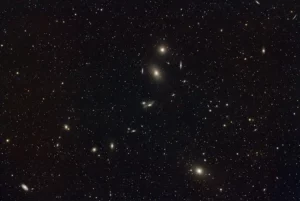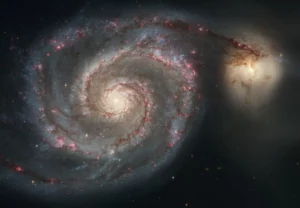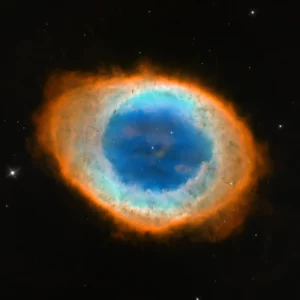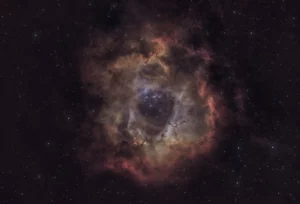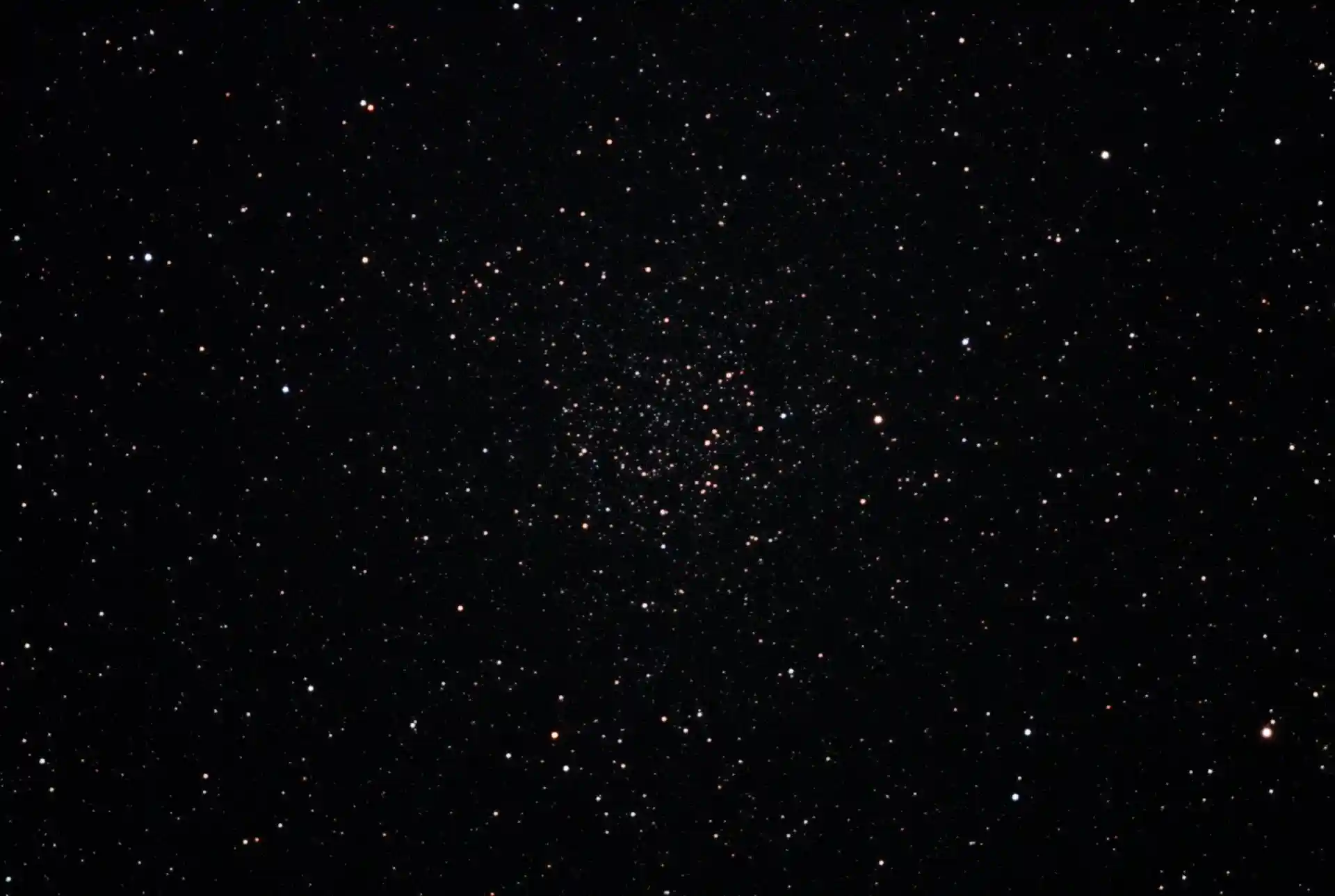
Open Star Clusters – Information and Observations
Open clusters are extended families of a few hundred comparatively young stars bound together by gravity. They originate from vast clouds of dust and gas – nature’s star factories – spread all across the Milky Way.
Many open clusters such as the Pleiades and the Hyades are large enough to be seen with the naked eye, and hundreds more become visible when using a telescope.
Because open clusters are strongly concentrated close to the galactic plane the best place to look for them is near the Milky Way. Most open clusters have large angular diameters, so when observing use a wide-field eyepiece and low power.
Try to examine each cluster for a few minutes and write in your logbook all that you see. Are there any double stars within the cluster? Is the cluster completely resolved into stars, or are there any unresolved stars causing the cluster to appear nebulous? What is its shape and how many stars can you see?
Open clusters observed with a 150-mm telescope
M48 is a quite conspicuous object and under good conditions, it can be seen with the naked eye. The cluster is large and dense, in the center I’ve seen a grouping of brighter stars.
M6 is a fairly difficult object due to its southern declination, but it can be easily seen if you have a clear southern horizon. It is composed of approximately ten bright stars disposed in the form of a rectangle, and other 40 stars of medium brightness.
Trumpler 2 is a beautiful cluster, elongated west-east. About 20 stars magnitude 8 to 12 are visible.
NGC 7160 is a small cluster in Cepheus, composed of ten faint stars that surround a brighter one. To the south, I’ve noticed two bright stars.
NGC 1857 is a large, dense cluster in Auriga. It is mostly composed of 7th-magnitude stars.
Collinder 62 is an unimpressive cluster, consisting of only three bright stars surrounded by fainter ones in the background.
Stock 2 is a very large cluster, it doesn’t fit in my one-degree field of view. Over 100 stars are visible, scattered in the field.
Open clusters observed with a 114-mm telescope
Upgren 1 is a very little-known cluster in Canes Venatici. It is not plotted on Sky Atlas 2000, but it’s included in Uranometria. It is the only open cluster in this constellation, it consists of approximately ten stars, scattered in the visual field of the eyepiece.
Collinder 394 is composed of 15 stars, three brighter ones arranged in the form of an isosceles triangle. The two eastern stars that form the base of the triangle are double stars, easily separated at 53x.
NGC 6716 is an interesting cluster, composed of 15 stars of medium brightness which form a pattern similar to that of the letter “U”. The cluster is not completely resolved, with averted vision, I have seen traces of granulation in the background.
NGC 7686 is composed of 10 bright stars, the other stars of the cluster are pretty faint. At a magnification of 53x I observed faint traces of nebulosity (the unresolved stars of the cluster). NGC 7686 is easily discernible from the background.
M52 is a small cluster, with a shape similar to that of a bean. East from the cluster I’ve found a bright star that contrasts with the other faint stars of which the star cluster is composed. M52 is extremely dense, composed of over 50 easily observed stars.
Trumpler 28 is a small cluster in Sagittarius, composed of a few brighter stars surrounded by nebulosity.
NGC 7235 is composed of three moderately bright stars disposed in the form of a triangle. At 36x faint granulation and nebulosity surround the cluster.
NGC 6383 is composed of 15 bright stars, of which a very bright one in the est.
NGC 2414 is a difficult cluster in Puppis, with a diameter of four arcminutes. Five stars are visible, of which a brighter one is to the east. Even at 120x, the cluster is unresolved, and the stars are surrounded by nebulosity in the western part.
Stock 1 is a large cluster in Vulpecula. It is composed of 15 bright stars disposed in a pattern similar to that of the constellation Cetus.
Stephenson 1 is a small cluster composed of about ten stars surrounding 11 and 12 Lyrae.
NGC 6830 is a cluster composed of stars with magnitudes between 11 and 12. It is small, condensed, and with direct vision I’ve seen three stars. Using averted vision I counted seven more.
NGC 188 is extremely faint, dense and small. I’ve only seen it using averted vision, it is unresolved into stars.
NGC 6823 is composed of faint stars scattered on almost half a degree. In some regions of the cluster, the stars are more close-packed.
NGC 6811 is a dense, round cluster, with a diameter of 20 arcminutes. Five brighter stars are easily seen, and the cluster has a granular appearance.
Collinder 419 is an obscure cluster in Cygnus. It surrounds stars located half a degree west of Sadr (the star between Deneb and Albireo).
NGC 129 is an obscure cluster composed of 15 fairly bright stars.
NGC 7082 is another obscure cluster in Cygnus. Only if you use your imagination it might look like an open cluster.
M47 is a cluster in Puppis, easily visible with the naked eye on a dark sky. I have seen 50 scattered stars, of which ten brighter ones. At low power, 36x, it seems split in two by a dark lane.
NGC 2423 is located a few minutes north of M47. It is a very spectacular cluster, very dense, composed of faint stars. A group of stars in the shape of a horseshoe is evident towards the center.
NGC 6882 is a beautiful open star cluster in Vulpecula. It is composed of 25 moderately bright stars, scattered around a brighter one.
M29 is a beautiful cluster in Cygnus, placed in a star-rich area of the Milky Way. Using 36x I could see eight stars easily discernible from the background.
M46 is one of the most spectacular open clusters I have ever seen. It is composed of about 50 stars concentrated in a field less than 30 arcminutes in diameter. To the west of the cluster, I have seen a 6th-magnitude star.
Collinder 350 looks like an open cluster only when seen through the finder scope. In the eyepiece, I’ve seen 15 stars scattered around the field.
On a winter evening, you can try your skill on a difficult cluster in Canis Major. At low power, NGC 2374 looks like a diffuse patch of light, with a diameter of 20 arcminutes. Around it, I have seen 20 faint stars.
NGC 2396 is composed of faint stars grouped in the form of the letter “U”. At the edge of the cluster, a few arcminutes to the north, you will find a spectacular double star, easily resolved at 36x. The two-component stars are yellow and topaz.
NGC 2539 shares the same visual field with the star 19 Puppis. After having consulted a detailed map, I have found that 19 Puppis is a member of the cluster. NGC 2539 is not very spectacular, it is composed of faint stars, very densely grouped. The cluster is well resolved at 36x.
NGC 1981 is located north of M42, it has a diameter of 0.5 degrees and is composed of 15 stars, of which seven brighter ones are arranged in an “M” pattern.
NGC 2506 is a cluster in Monoceros. Seen at low power it looks extremely well like a comet. At 36x the cluster is unresolved, faint nebulosity surrounds five faint stars that are closely packed together. Even at 120x the cluster remains unresolved, but the five stars are more easily seen.
NGC 1647 is a spectacular cluster in Taurus, composed of 40 scattered stars. Its diameter is 45 arcminutes.
Harvard 20 is an interesting cluster in Sagitta, it has two bright stars to the west. Except these two stars, five more are visible. The stars of the cluster are grouped in the form of an isosceles triangle. Using averted vision I observed granulation in the background.
NGC 6940 is a beautiful cluster, extremely dense and large. It is formed of faint stars and looks like a small chunk of the Milky Way.
Collinder 69 is easily visible to the naked eye, it is the asterism that forms Orion’s head. The cluster is composed of 15 stars, surrounded by other three brighter ones. It is easily discernible from the background stars.
M39 is a cluster in Cygnus, composed of bright stars scattered around the field. It is best seen at low power.
NGC 6416 is located in Sagittarius, west of M6. It is an obscure and uninteresting cluster.
Placed between Delta and Gamma Cancri, M44 is easily visible with the naked eye on a dark sky. The cluster consists of a great number of stars, but because of its large diameter it is best seen in a finder scope. Observing at 36x I noticed an interesting grouping in the shape of a triangle, composed of bright stars.
The other open star cluster in Cancer is M67, two degrees west of Alpha Cancri. M67 is not very bright, it has only one brighter star in the north. The cluster is well resolved at 36x, but to eliminate the faint traces of nebulosity I used 120x.
NGC 2264 is composed of 20 stars gathered around a brighter one. The Cone Nebula, invisible through my 114-mm telescope, surrounds it.
Melotte 111 comprises the largest part of the constellation Coma Berenices. It is best seen with the naked eye, it barley fits in my finder scope. 25 stars with magnitudes below eight are visible.
NGC 752 is an interesting cluster in Andromeda. It is visible with the naked eye, its diameter is about one degree. I observed a bright star near the center of the cluster. NGC 752 is composed of 60 stars, it looks like a small chunk of the Milky Way. In the same field with the cluster I have observed the double 56 And, well resolved at 36x.
NGC 6939 in Cygnus appears in the same visual field with the galaxy NGC 6946. The cluster is small, faint, and largely unresolved at 36x. I have seen only four stars surrounded by nebulosity. Using a magnification of 120x the cluster is almost completely resolved.
Collinder 463 is composed of 30 scattered starsa and its shape is elongated. It is very discernible because it is placed in an area deprived of bright stars.
In Auriga you will find three interesting clusters, disposed almost in a line, only M37 a little more to the north than the other two. M37 is the most spectacular cluster in the group, very dense and large, with a diameter of 24 arcminutes. In the center of the cluster, I found a bright red star. M38 is the least bright and dense. M36 is pretty small, it has a diameter of 12 arcminutes and is somewhat denser than M38.
Also in this constellation, I have found a beautiful cluster, little known to amateur astronomers. NGC 2281 has its stars grouped in the shape of the letter “S”. Using 36x the cluster is completely resolved, without traces of nebulosity. If you watch the field very carefully, you should see nearly 20 faint stars.
NGC 6530 is the cluster formed inside the Lagoon Nebula and it is surrounded by faint traces of nebulosity. I counted 15 stars, closely packed together.
Located south of Pollux, NGC 2420 is a small, dense cluster. It looks more like a globular cluster, towards the center it is not completely resolved at 36x.
M21 is found in the same visual field as the Trifid Nebula, it is a small cluster composed of a few fairly bright stars.
NGC 6704 in Scutum is 9.2 magnitude, quite a difficult open cluster. Using averted vision I have managed to see some faint stars in the cluster.
At 36x, M11 looks like a perfectly resolved globular cluster. Using 120x the stars of the cluster are somewhat better visible, but it loses much of its beauty.
In Gemini, you will find M35, a large cluster rich in stars, with a rectangular shape.
IC 4703 is the cluster surrounded by the Eagle Nebula. It is dense, and composed of 40 bright stars.
Collinder 399 is a spectacular cluster also known as the Coathanger, because of its shape. It is best seen in the finder scope. The cluster fits my 1.4-degree field, it is composed of eight bright stars, of which four disposed in a line. It is visible with the naked eye, a nebulous object a few degrees south of the star Albireo.
M103 is an open cluster located near Delta Cassiopeiae. It is small, I have counted a little more than ten stars.
To the west of M103, you will find three NGC clusters that share the same field. NGC 654 is small, composed of faint stars, even with averted vision it has a nebulous aspect. NGC 663 is a little larger, dense, composed of nearly 20 stars. NGC 659 is the most difficult, I have managed to see some stars only by using averted vision.
In my opinion, the double cluster in Perseus ( NGC 869 and NGC 884) is the second-best in the sky after M11. The clusters are composed of countless stars and both are very dense. Using 120x even more stars become visible.
Open clusters observed with a 60-mm telescope
Collinder 339 (Brocchi’s Cluster) – One of the few Collinder clusters that really looks like an open cluster. Composed of approximately ten bright stars disposed in the shape of an isosceles triangle.
M11 – Small cluster in Scutum. At low power, it has a diffuse aspect. Towards the center I can see three stars.
M35 – A beautiful cluster composed of approximately 40 stars. Large and scattered.
The Hyades cluster is best seen with binoculars. Numerous stars are visible in the finder scope.
M24 – A chunk of the Milky Way, easily observable with the naked eye.
M41 – A beautiful cluster composed of bright stars. You can find it easily, just four degrees below Sirius.
IC 4665 – Large, it barely fits in the eyepiece field. Composed of approximately 30 bright stars. It is visible to the naked eye.
Collinder 350 – It looks like an open cluster only when seen through the finder scope. 15 bright stars scattered across the visual field are visible.
M39 – Large and very scattered. Composed of approximately 40 stars, of which ten brighter ones.
M26 – Small and faint. I didn’t manage to resolve it into stars, even at high power. Towards the center I’ve seen two stars.
NGC 6940 – A large cluster, composed of approximately 100 bright stars.
The Alpha Persei Grouping – A large number of bright stars, surrounding the star Alpha Persei.
M44 (The Praesepe Cluster) – Easily seen with the naked eye. Through the telescope, I’ve seen a huge number of stars, arranged as a triangle.
NGC 6633 – A very beautiful cluster, an elongated shape.
M45 (The Pleiades Cluster) – A large number of stars visible in the eyepiece. Best seen with the finder scope.
IC 4756 – Approximately 100 stars scattered in the field.
NGC 869 and NGC 884 (The Double Cluster) – Both clusters are very bright and dense.
M34 – Fairly dense, composed of approximately 50 stars.
IC 4703 – The cluster associated with the Eagle Nebula. Dense, composed of approximately 40 bright stars.
M7 – Large, composed of approximately 50 bright stars. More condensed towards the center. It is visible to the naked eye.
Stock 1 – Near Albireo (Beta Cygni). Composed of 30 stars scattered in the field.
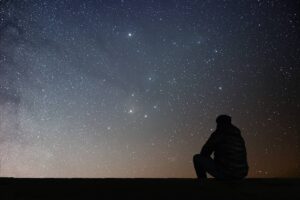
Emil, an avid astronomy writer, formerly owned and ran nightskyinfo.com, making the universe more comprehensible for his readers. He has recently handed over its reins to Tom Urbain from starlust.org, ensuring that his legacy of simplifying the stars continues to enlighten and inspire.
Discover More Deep Sky Objects to Observe🔭
This page is part of our collection of deep-sky objects articles. If you enjoyed the read, then you’ll love the following articles.

